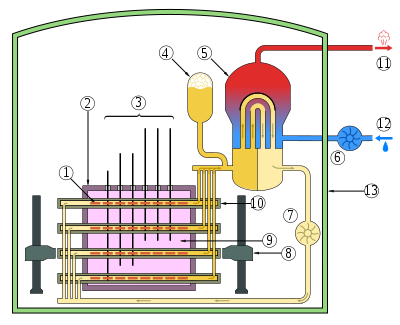 03-30-2011, 04:22 PM
03-30-2011, 04:22 PM
|
#62 (permalink)
|
|
Pokémoderator
Join Date: Dec 2007
Location: Southern California
Posts: 5,864
Thanks: 439
Thanked 532 Times in 358 Posts
|
Hello -
My Dad likes this design the most :
CANDU reactor - Wikipedia, the free encyclopedia

Quote:
The CANDU reactor is similar to most light water reactors: Fission reactions in the reactor core heat pressurized water in a primary cooling loop. A heat exchanger transfers the heat to a secondary cooling loop, which powers a steam turbine with an electrical generator attached to it. Excess heat in the steam after flowing through the turbine is disposed into cool water, from eg a lake, river or ocean. Newer CANDU plants, such as the Darlington Nuclear Generating Station near Toronto, Ontario, use a diffuser to spread the warm water over a larger area and limit the effects on the environment. A cooling tower can be used, but it reduces efficiency.
In an LWR, the entire reactor core is a single large pressure vessel containing the light water, which acts as moderator and coolant, and the fuel arranged in a series of long bundles running the length of the core. At the time of its design, Canada lacked the heavy industry to cast and machine the pressure vessels.[2] In CANDU the pressure (and the fuel bundles) is contained in much smaller (10 cm diameter), easier to fabricate tubes. Each bundle is a cylinder assembled from alloy tubes containing ceramic pellets of fuel. In older designs the assembly had 28 or 37 half-meter-long fuel tubes with 12 such assemblies lying end to end in a pressure tube. The newer CANFLEX bundle has 43 tubes, with two pellet sizes (so the power rating can be increased without melting the hottest pellets). It is about 10 cm (four inches) in diameter, 0.5 m (20 inches) long and weighs about 20 kg (44 lb) and replaces the 37-tube bundle. To allow the neutrons to flow freely between the bundles, the tubes and bundles are made of neutron-transparent zircaloy (zirconium + 2.5% wt niobium).
|
CarloSW2 |
|
|

|